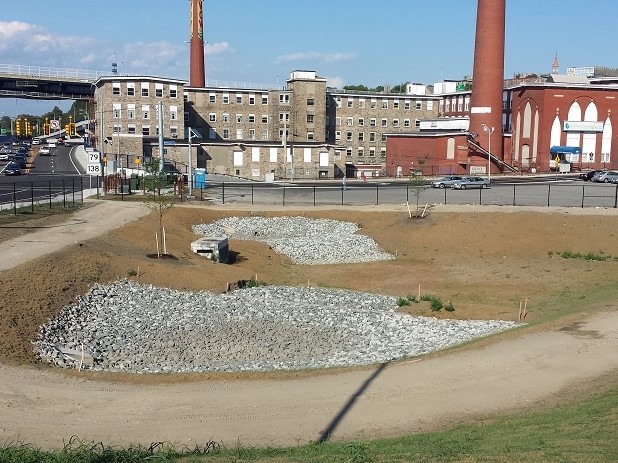
Infiltration Basin
Asset Type : Enhanced
Water Classification:
Stormwater
Source Water Recharge
Combined Sewer Overflows
Stormwater
Source Water Recharge
Combined Sewer Overflows
Construction Rank :
2
O&M Rank :
3
How it Works : An infiltration basin is a vegetated depression designed to capture stormwater runoff and allowing it infiltrate into the ground over a period of a couple of days. It does not retain a permanent pool of water.
O&M Required : Set up a regular schedule to go inspect the basin for signs of deterioration, clogging or other blockages. That may include regular removal of sediment. When it is first created it should be inspected monthly or after any large storm event. After it is shown to function normally, inspections may be made semi-annually. There may be some vegetation that needs to be managed. The frequency will depend on the climate and type of vegetation. It is important to keep a dense turf, Any bare sports should be revegetated as quickly as possible. Remove the sediment and put it in a location where it will not impact the trench in the future, add vegetation as necessary. Make sure the vegetation is suitable for the climate so it needs as little maintenance as possible. Low-growing, stoloniferous grasses will allow you to mow rarely (twice a year).
Design Considerations : Soil Infiltration Guidelines and Soil Testing Protocols apply. It is best to preserve existing vegetation, if possible. Design the basin to hold/infiltrate volume difference in 2-yr storm. Provide stormwater overflow through engineered outlet structure. Allow 3 ft buffer between bed bottom and seasonal high groundwater table and 2 ft buffer for rock. When possible, place on upland soils. The slope of the infiltration basin should be flat or less than 1 percent.
There should be at least 2 feet of freeboard between the invert out and the top of the berms. Inlets should have erosion protection.
Costs : The cost for infiltration basins are relatively low, ranging from less than $0.50 to more than $1.30 per cubic foot depending on size and existing conditions.
Benefits : Reduces peak flow rate and energy of stormwater discharges, therefore limiting downstream erosion and scouring. Can be used for recreation when dry. Can help to maintain baseflow of nearby streams. Can serve as greenspace, supporting wet prairie functions and wildlife habitat. Reduces local flooding. Can be effective at pollutant removal via filtering through the soils. Simple and cost-effective to construct.
References:
Image by: MassDOT via https://www.flickr.com/photos/massdot/29856364125